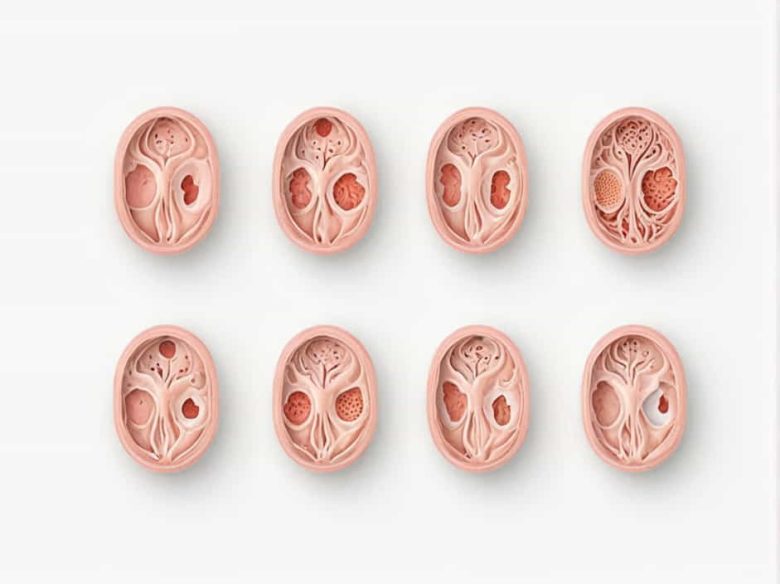The Golgi apparatus also known as the Golgi complex or Golgi body is an essential organelle found in eukaryotic cells. It plays a critical role in processing modifying and packaging proteins and lipids before they are transported to their final destinations.
Understanding the function of the Golgi apparatus is important in cell biology because this organelle is vital for cellular organization secretion and intracellular transport. This topic will explore the structure functions and importance of the Golgi apparatus in detail.
1. What Is the Golgi Apparatus?
a) Definition of the Golgi Apparatus
The Golgi apparatus is a membrane-bound organelle that works closely with the endoplasmic reticulum (ER) to process and distribute molecules inside the cell. It is often compared to a post office because it modifies sorts and ships proteins and lipids to their correct locations.
b) Discovery of the Golgi Apparatus
The Golgi apparatus was first discovered by Camillo Golgi in 1898 using a special staining technique. Since then scientists have recognized it as a crucial component of the endomembrane system.
2. Structure of the Golgi Apparatus
The Golgi apparatus has a distinct structure that allows it to efficiently process and transport cellular materials.
a) Stack of Cisternae
The Golgi apparatus consists of flattened membrane-bound sacs called cisternae. These stacks are divided into three regions:
- Cis-Golgi (Receiving Side) – Located near the endoplasmic reticulum (ER) this is where newly synthesized proteins and lipids arrive.
- Medial-Golgi (Processing Zone) – The region where proteins and lipids undergo modifications such as glycosylation and phosphorylation.
- Trans-Golgi (Shipping Side) – The final processing area where molecules are packaged into vesicles and sent to their destinations.
b) Vesicles and Transport
The Golgi apparatus interacts with vesicles which are small membrane-bound sacs that transport molecules within the cell. These vesicles help move proteins and lipids between the ER Golgi and final locations like the plasma membrane or lysosomes.
3. Functions of the Golgi Apparatus
The Golgi apparatus has multiple important roles in cellular function and survival.
a) Protein Processing and Modification
One of the main functions of the Golgi apparatus is to modify proteins that are synthesized in the rough endoplasmic reticulum (RER). These modifications include:
- Glycosylation – Adding sugar molecules to proteins forming glycoproteins.
- Phosphorylation – Adding phosphate groups to activate proteins.
- Sulfation – Adding sulfur groups to enhance protein function.
These modifications ensure that proteins are functional and ready for transport.
b) Sorting and Packaging of Proteins and Lipids
Once proteins and lipids are modified the Golgi apparatus sorts and packages them into vesicles for delivery. These molecules can be sent to:
- The plasma membrane for secretion.
- Lysosomes for digestion and waste breakdown.
- Other organelles that need specific proteins or lipids.
c) Secretion of Proteins and Hormones
Cells that produce large amounts of enzymes hormones or antibodies (such as glandular cells) rely on the Golgi apparatus to package and export these molecules through exocytosis.
d) Formation of Lysosomes
The Golgi apparatus is responsible for producing lysosomes which are small organelles filled with digestive enzymes. Lysosomes break down waste materials cellular debris and harmful substances.
e) Lipid and Carbohydrate Processing
In addition to proteins the Golgi apparatus also modifies lipids and carbohydrates by:
- Producing glycolipids (lipids with sugar chains) used in cell membranes.
- Processing sphingolipids which are important for nerve cells.
f) Transport of Cell Wall Materials (In Plants)
In plant cells the Golgi apparatus is crucial for producing cell wall components such as cellulose and pectin which provide structure and support to the plant.
4. Importance of the Golgi Apparatus in Cellular Function
The Golgi apparatus is essential for cellular organization and communication. Without it cells would not be able to properly distribute proteins lipids and enzymes.
a) Role in Cell Communication
By modifying and packaging proteins the Golgi apparatus ensures that cells can send signals to each other which is crucial for hormonal responses and immune function.
b) Maintaining Homeostasis
The Golgi apparatus regulates the balance of proteins and lipids within the cell helping to maintain cell stability and function.
c) Supporting Cell Growth and Division
During cell division the Golgi apparatus helps distribute new proteins and lipids to forming daughter cells ensuring their proper function.
5. Factors Affecting Golgi Apparatus Function
Several factors can impact the performance of the Golgi apparatus affecting protein and lipid transport.
a) Genetic Disorders
Certain genetic conditions such as Congenital Disorders of Glycosylation (CDG) affect Golgi function and lead to impaired protein processing.
b) Viral Infections
Some viruses such as coronaviruses and influenza hijack the Golgi apparatus to modify and release viral proteins helping them spread in the body.
c) Environmental Stress
- Nutrient deficiency – Lack of essential nutrients can disrupt Golgi activity.
- Toxins and pollutants – Harmful substances can interfere with protein modification and transport.
6. The Golgi Apparatus and Disease
Malfunction of the Golgi apparatus can contribute to various diseases:
a) Neurodegenerative Diseases
Diseases like Alzheimer’s and Parkinson’s have been linked to Golgi dysfunction as improper protein processing leads to the accumulation of toxic proteins.
b) Cancer
Abnormal activity of the Golgi apparatus has been observed in certain cancers where it promotes uncontrolled cell growth and protein secretion.
c) Immune System Disorders
Since the Golgi apparatus plays a role in antibody production defects in its function can weaken the immune response making the body more vulnerable to infections.
7. Can the Golgi Apparatus Be Repaired or Enhanced?
Scientists are exploring ways to improve Golgi function in cases of disease or aging. Some potential approaches include:
a) Gene Therapy
Correcting genetic mutations that affect the Golgi apparatus could help restore its function.
b) Antioxidants and Nutritional Support
Providing essential nutrients like vitamins amino acids and healthy lipids may help maintain optimal Golgi activity.
c) Targeted Drug Therapies
New drugs are being developed to regulate Golgi function particularly in cancer and neurodegenerative diseases.
The Golgi apparatus is an essential organelle responsible for modifying packaging and transporting proteins and lipids. It plays a crucial role in cellular communication secretion and maintaining homeostasis.
A properly functioning Golgi apparatus is necessary for healthy cells and overall bodily function. Understanding its functions helps scientists develop treatments for diseases linked to Golgi dysfunction ensuring better health and improved cellular processes.



